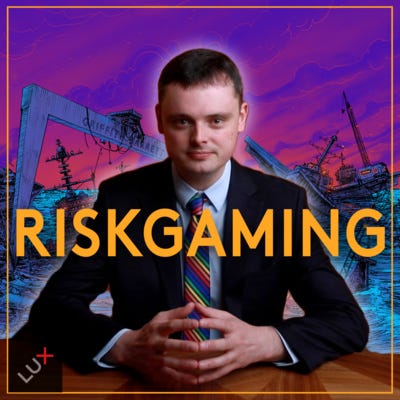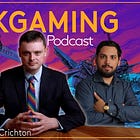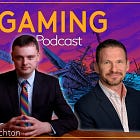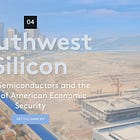"If you’re not solving for pain, then what the hell are you doing?"
Tony Fadell on risk and reward
Tony Fadell is the consummate Silicon Valley builder, having conceived, designed and executed such iconic products as the Apple iPod and iPhone as well as the Nest thermostat. He’s also author of Build: An Unorthodox Guide to Making Things Worth Making, from Harper Business.
In 2022, he joined me and our own Peter Hébert to talk about the time he walked out of a position just two weeks on the job, how the serendipity of the Valley led to Apple, how to build human connections, why he thinks many innovations in the tech world today are a waste of time, and the importance of storytelling and product marketing when building a product.
His interview stands as a master class to aspiring entrepreneurs and investors alike.
This conversation has been edited for length and clarity. For the full discussion, please visit the Riskgaming podcast.
Danny Crichton:
I read your book Build, and one thing that struck me is the panorama of your experiences. You’re most associated with Apple and then with Nest, but you’ve actually been attached to a number of other startups in Silicon Valley. I wanted to start with a very short experience you had back at the height of the dot com bubble, RealNetworks, a company that you joined for literally, I guess, two weeks.
Tony Fadell:
So RealNetworks, how did I get there? Well, I was at Philips at the time — Philips Electronics from the Netherlands. I started a team there. I started a whole business group called The Phillips Mobile Computing group. We were doing handhelds for mobile-based computing.
I was learning all about digital media because we were the first devices to have Audible back in the day. I was thinking all the time, what if this was music? I was a DJ, and I was sick and tired of carrying all these heavy CDs — you know, a thousand CDs — to each gig. I thought, “wow, if these devices are doing audiobooks, one day, they could be doing music.”
So I switched to Philips’ strategy and ventures arm, and it was the dot-com craziness. I was watching all of these companies getting started and funded, and I didn’t know anything about that world because I was always deep inside Philips or General Magic before.
I decided I wanted to go learn about it because I saw all my friends doing it. So I started learning about venture, and at that time we were investing in companies like TiVo and Audible.
I’m watching this digital transition happen, and I come up with this idea: Phillips makes all this hardware and RealNetworks was making this software called RealPlayer. And what RealPlayer was all about was getting audio. So it was audio streaming but they also had music files — MP3s were coming out — and so you could listen to music.
I was like, “oh my God, this is perfect.” Phillips could make the hardware and Real could supply the software. Let’s put these two things together and create a whole line of consumer electronics for music. So I got the CEO of Phillips together with the CEO of RealNetworks.
What happened was the CEO of Phillips was about three hours late to the meeting. So I sat there with Rob Glaser for three hours, telling about the vision I had for this thing. He was getting all anxious and excited.
So the CEO came and they had a little thing, but it was very short. Literally 24 hours later, I get an email from him saying that he wants me to join RealNetworks and build what I want to build. They’d let me build a team in Silicon Valley, build the hardware and put Real software on it. And we’d license the devices out to people.
I thought it sounded really cool, so I joined up. When I got there, the CEO goes “Well, we have a change of heart… Well not change of heart. We just changed our strategy. You’re going to need to move to Seattle now.” And I’m like, what? What do you mean? We had already agreed on Silicon Valley.
He’s like, well, I changed my mind.
Peter Hébert:
This is day one.
Tony Fadell:
Yeah, day one or two. Strategy change! And so I go up to Seattle to look at it, and I’m sitting there. I just left my whole community that I was building in in Silicon Valley from General Magic. So over those two weeks, I was like this is not going to work for me. I’m done.
From there, I created my own company called Fuse to then take some of those ideas and change them up a bit.
At the time, everyone was all about home theaters. But home theaters — you had to assemble them with different brands of speakers and TV and home audio and video components to get this digital experience. So I was like, okay, we’ll make a one-box product. It was a software-driven box where you could put CDs in, it would rip them to MP3 files, and you could have this digital jukebox of all your music.
And then, of course, the internet crunch happened, and people didn’t want to fund hardware companies.
Danny Crichton:
So you joined the fruit company.
Tony Fadell:
Right. I was trying to raise capital for Fuse, and this was over the latter half of 2000. I went on 80 pitches. I got 80 “nos,” and it was really, very difficult.
I took a week off in the beginning of January. I went to go find myself, I guess. I went to lunch with a guy. His name was Ali Alasti. We worked together at General Magic, and I told him about the disaster that was going on. The next day, he had lunch with a guy from Apple who he had worked with at Next. His name is John Rubenstein. And what John said was “Who do you know who does digital devices and might know some things?”
And Ali said he should talk to me. I got a call days later, and that’s the beginning of my contracting assignment with Apple, which was to create the Apple version of an MP3 player.
And so over six weeks, I envision the product, put together the different options, the bill of materials, what the architecture would look like… all these things. I presented it to Steve Jobs in March of 2001.
You don’t know if it’s today that something’s going to hit or it’s going to be months or years later. But at some point, all that serendipity will come together and you can actually do something amazing.
Danny Crichton:
There’s a number of really interesting storylines throughout your book. One thing that’s almost implicit is the serendipity of Silicon Valley.
You don’t know if it’s today that something’s going to hit or it’s going to be months or years later. But at some point, all that serendipity will come together and you can actually do something amazing.
Tony Fadell:
There’s a chapter in the book called “Death of a Salesman,” but it’s not about transactions. It’s about relationships. And the serendipity of Silicon Valley – that’s how it happened going to Apple. It was about keeping up a relationship. You would work together with somebody and you would build a relationship. It wasn’t about the company you’re at, or the deal you’re trying to get done. You met on a human level.
We still had relationships even as the companies changed or the technology changed. Maybe in some cases, we were competitors. But that spirit kept going and that relationship kept going. If you invested in it, other people would invest as well.
That’s a really key piece of what Silicon Valley was and is. And now, those same kinds of networks are growing up all around the world. You don’t know if it’s today that something’s going to hit or it’s going to be months or years later. But at some point, all that serendipity will come together and you can actually do something amazing.
Danny Crichton:
You talk in the book about the importance, even at a large company, of not just building relationships internally, but to get out of those walls. It’s very easy to basically only know folks inside the building and never have the opportunity to leave.
Tony Fadell:
You have to get outside. You have to understand what’s going on in the markets. You have to understand what’s going on with your customers or consumers.
You do have to build the relationships inside the organization, but you have to maintain those relationships separate from the companies you are at, because you never know what’s going to happen. Maybe the companies can be partnered together at some point, or maybe they might recruit you, you might recruit them.
It’s the best time to get great teams when the markets are down. Those people who know how to do a lot with little, those are the people you want.
Peter Hébert:
You’re very overt about your appreciation of the old-school approach: keeping it gritty, working incredibly hard.
Having been in many ways a product of the 2000 crash, what do you think about the current environment? Do you think some what we’ve seen in the last decade — where these companies have become large and bloated — will change and we will get those grittier, more focused entrepreneurs?
Tony Fadell:
It’s the best time to invest. It’s the best time to get great teams when the markets are down. Those people who know how to do a lot with little, those are the people you want on your teams. Not the ones who have to be surrounded by more and more teams and people.
You’re going to see those cultures that got fat, dumb and lazy — even if they didn’t have revenue, but because they had too much free capital coming. You’re going to see massive layoffs. You’re going to see the culture change. All the employees who are like, “Oh, you mean I have to work now?” they are in trouble.
It’s better to always stay tight, stay gritty. Because it eventually turns. It always turns. This is a sinusoid. It isn’t a straight line. So if you keep that grittiness, when the downturn comes, you don’t have to worry about changing your culture or mindset. Just remember to stay grounded, because you can get through those tough times. You know, all those perks and everything? They will go away, eventually. They have to go away because that’s not reality.
Peter Hébert:
Would you have been the same entrepreneur — have achieved the same level of success — had you not had some of those early failures?
Tony Fadell:
There’s a chapter called “Fuck Massages” in the book. You know where I learned that? I learned it from my grandfather, who grew up in the Depression. He would save every nut and bolt. If a piece of equipment broke, he would tear it down to the component pieces and put them in little cigar boxes all around the garage. So if he ever needed it again, it would be there as a resource to him.
That’s how I was raised, with a Depression-era grandfather who said all of this stuff is precious. Use it and save it because you never know when you need it.
Danny Crichton:
That was one of the surprises for me in your book. I identify you with these iconic products — iPod, iPhone. I didn’t know that you quit Apple three times. That you actually left, came back, left, came back.
I’m curious about some of the stories there. When did you know that you needed to go? And when did you know that you needed to come back?
Tony Fadell:
So first, when I say I quit… I said “I quit,” but the process didn’t complete. So two of the three times, I said, “I quit,” I was walking out the door. In one case, I had my stuff loaded in a box and I was having a thank you party for the team that night. And then, in the subsequent four hours, it got fixed. And I told the team, “Tony staying party!”
So that time, it was really about necessary conditions that weren’t satisfied when I first joined the company. That was the first time. The second time was really about a fundamental decision that had no reason for happening except it was political. And I said, this is bullshit. The third time was really personal. It was a real personal thing about our family.
So each of those times was for real reasons, and it came after I tried all kinds of positive and constructive ways of trying to fix the problem. But sooner or later, if you really believe it and you want that to change, you have to walk out the door. People aren’t going to protect you. They’re not defending you. You have to defend yourself.
And when you do, then you really know what your value is.
Peter Hébert:
You are now a successful investor. When you look at entrepreneurs, when you are meeting with a founder and are captivated, what is it? And as you’re evaluating opportunities to invest in, are you giving points for extra difficulty? Does that create greater affinity for you?
Tony Fadell:
Absolutely, but we’re not investors. We’re mentors with money. The reason we do what we do is because I tried to be retired and it really sucked. I thought, “Well, can I work with teams that are doing really hard things?” I want to work with them and I’m also curious about them. I think they’re doing something that’s going to fix the planet, fix society, fix health.
That’s what we really go for. We’re looking for disruptive deep technology. We care about when you’re doing something hard, something really challenging. You need to have a great set of people around you. That’s why, writing the book, I had mentors around me.
If you’re not solving for pain then, what the hell are you doing?
We want to try to help those companies we go in, because they are trying to do something that is so against the grain, something that most investors won’t invest in till it becomes the fashion. We do it with our own time and money, and we don’t care about anybody else’s things because we believe in their trajectory.
Danny Crichton:
You have this quote in the book that if you’re not solving a real problem, you can’t start a revolution. And one of the things that is interesting across both your own work as well as the companies you’ve been investing in, is a lot of them solve real problems. That has to be intentional.
Tony Fadell:
Look, if you’re not solving for pain then, what the hell are you doing?
General Magic wasn’t solving for pain. We were trying to impress the geek next to us. We were making the iPhone 15 years too soon. The technology wasn’t ready. The market wasn’t ready. Society didn’t have the problems we were trying to solve, which were like mobile email. Most people didn’t even have email. E-ticketing for travel. Why? This was before Wi-Fi, before data networks and mobile phones.
You could say, well, General Magic had to exist for the iPhone to exist. Sure. But at the same time, we could have used a lot of that talent to solve other problems along the route to get to the iPhone in a much smarter way. I look at things like the metaverse. I’m saying what pain are you solving? I’m all for AR and VR and XR technology, but only in service of a pain point to create a new tool.
There’s so many things we can fix where there are problems, why the hell are we putting all this capital to work for things that aren’t problems?
Danny Crichton:
One other question I have is around the profession of product and design. Obviously, 30 years ago, there were not a lot of product designers out there. Now, it is a huge profession.
I’m curious when you look forward, what’s going to change for the folks who are working in product, in design, in the coming years.
Tony Fadell:
I think we’re finding more and more that learning by doing is it. That’s the way you do it. And so, you’re going to see more, apprenticing and more internships — getting in and learning with the teams in the environment that they’re in.
You know, the best school that we ever hired from had one semester in school and the other semester in a workplace, and that was Waterloo. That’s what we need — a semipermeable membrane.
More and more universities are starting to focus on learning by doing, or more project-based learning. The more you can share with the corporate world or the startup world, the better when they’re younger. Because that’s how I learned. I learned by building my own companies and going back and forth between work and school. I had my own startup in high school, had three startups in college, and I would go back and forth from school to my own job.
I think that’s a much more powerful workforce and a much powerful way of educating people.
Most people talk about the what, what, what? Not the why, why, why? Why is the most important from an entrepreneurial perspective.
Peter Hébert:
I will give you the last question. There’s a volume of guidance in your book. But if there’s one thing that some aspiring entrepreneur, the Tony Fadell of today, should take away, what is it?
Tony Fadell:
Learn how to tell a non-fictional story. Tell a story that matters; that is solving pain and giving a superpower to somebody. Make sure it’s an incredible story, and that you can actually deliver it. It’s not Theranos. Have a great story and a way to show that you can implement it, and it’s meaningful. It’s a large enough market, all this stuff.
But most people talk about the what, what, what? Not the why, why, why? Why is the most important from an entrepreneurial perspective.






